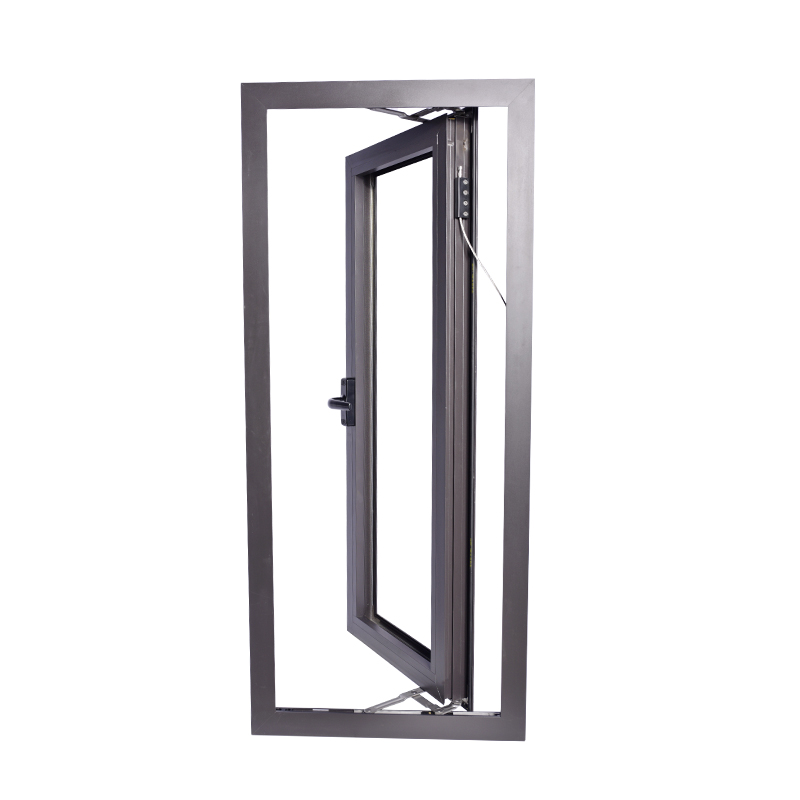Send inquiry
Aluminum profiles form the structural framework of modern aluminum alloy windows. They determine not only the strength and durability of the frame but also its insulation, soundproofing, and design adaptability. With various architectural styles and performance requirements, choosing the right aluminum profiles for windows is crucial to achieving both aesthetic and functional excellence. The right profile ensures that windows perform efficiently under different environmental conditions and architectural demands.
When choosing aluminum profiles for windows, several performance and design aspects must be evaluated. The goal is to match the window type with a suitable profile that can deliver optimal results in terms of energy efficiency, stability, and appearance.
The strength of aluminum profiles depends heavily on their alloy composition and wall thickness. Thicker profiles are suitable for large window spans or areas with strong wind loads, while thinner profiles are used for smaller window openings. Common alloys such as 6063-T5 and 6061-T6 offer excellent tensile strength and corrosion resistance, making them ideal for long-lasting window frames.
Energy efficiency is a major consideration in modern architecture. Thermal break aluminum profiles incorporate polyamide insulation strips that separate the interior and exterior aluminum layers, significantly reducing heat transfer. This feature enhances comfort, lowers energy bills, and improves sustainability in both residential and commercial buildings.
Surface treatments not only affect the appearance but also the corrosion resistance of aluminum alloy windows. Common finishes include:
Each architectural style requires a specific profile design. Minimalist frames with slim sightlines enhance modern aesthetics, while thicker and decorative profiles fit traditional designs. The color, shape, and overall geometry of the frame should complement the building’s style while maintaining durability and ease of maintenance.

Different window types demand specific profile structures to balance ventilation, sealing, strength, and design. Below is a detailed guide for selecting suitable aluminum profiles for various window styles.
Casement windows open outward or inward on hinges and require profiles that provide excellent sealing and rigidity. For these windows, choose profiles with multiple chambers and robust corners to ensure wind resistance and airtight performance. Adding thermal break technology enhances insulation and prevents condensation.
Sliding windows use horizontal or vertical tracks, demanding lightweight yet smooth-gliding profiles. The key is to select precision-engineered frames with integrated roller channels and tight sealing brushes. A well-designed aluminum profile ensures effortless movement while maintaining insulation and noise control.
For awning or top-hung designs, where windows open outward from the bottom or top, stability and waterproofing are crucial. Aluminum profiles with drainage systems and strong corner joints are ideal. These profiles must resist deformation caused by wind pressure and frequent operation.
Fixed windows do not open, so they rely on profiles that enhance aesthetic appeal and structural support. Slimline aluminum profiles are perfect for maximizing natural light and view while maintaining high rigidity. These profiles often feature sleek, minimalist designs that align with modern glass facades.
Tilt-and-turn windows require complex profiles capable of supporting dual opening mechanisms. Profiles for this window type should be reinforced, multi-chambered, and equipped with premium gasket systems for air tightness. European-style tilt-and-turn systems often use 70mm to 80mm frame depths for optimal insulation and strength.
| Window Type | Recommended Profile Features | Key Advantages |
| Casement Window | Thick, multi-chamber thermal break profiles | High strength, airtight sealing |
| Sliding Window | Lightweight tracks, integrated brush seals | Smooth operation, space-saving |
| Awning/Top-Hung | Profiles with drainage and reinforced corners | Waterproof, wind-resistant |
| Fixed Window | Slimline, aesthetic frames | Maximum visibility, minimal frame |
| Tilt-and-Turn | Reinforced, deep frame profiles | Dual-function opening, superior insulation |
Every building project has unique needs. High-rise buildings may require heavy-duty aluminum profiles with wind load resistance, while residential projects may focus more on aesthetics and insulation. For example, thermally broken aluminum alloy windows are ideal for energy-efficient homes, while anodized profiles are better suited for coastal or humid environments due to their superior corrosion resistance.
Manufacturers often offer customization for aluminum profiles, including different depths, glazing options, and hardware compatibility. Selecting profiles that can integrate seamlessly with curtain wall systems or double-glazed units enhances both functionality and visual harmony.
Choosing the right aluminum profiles for windows is a critical decision that affects long-term performance, comfort, and appearance. Whether it’s a simple residential casement or a complex tilt-and-turn commercial system, the correct aluminum profile ensures structural strength, energy efficiency, and aesthetic value. Partnering with experienced aluminum window manufacturers allows architects, builders, and homeowners to achieve a perfect blend of design innovation and practical reliability.